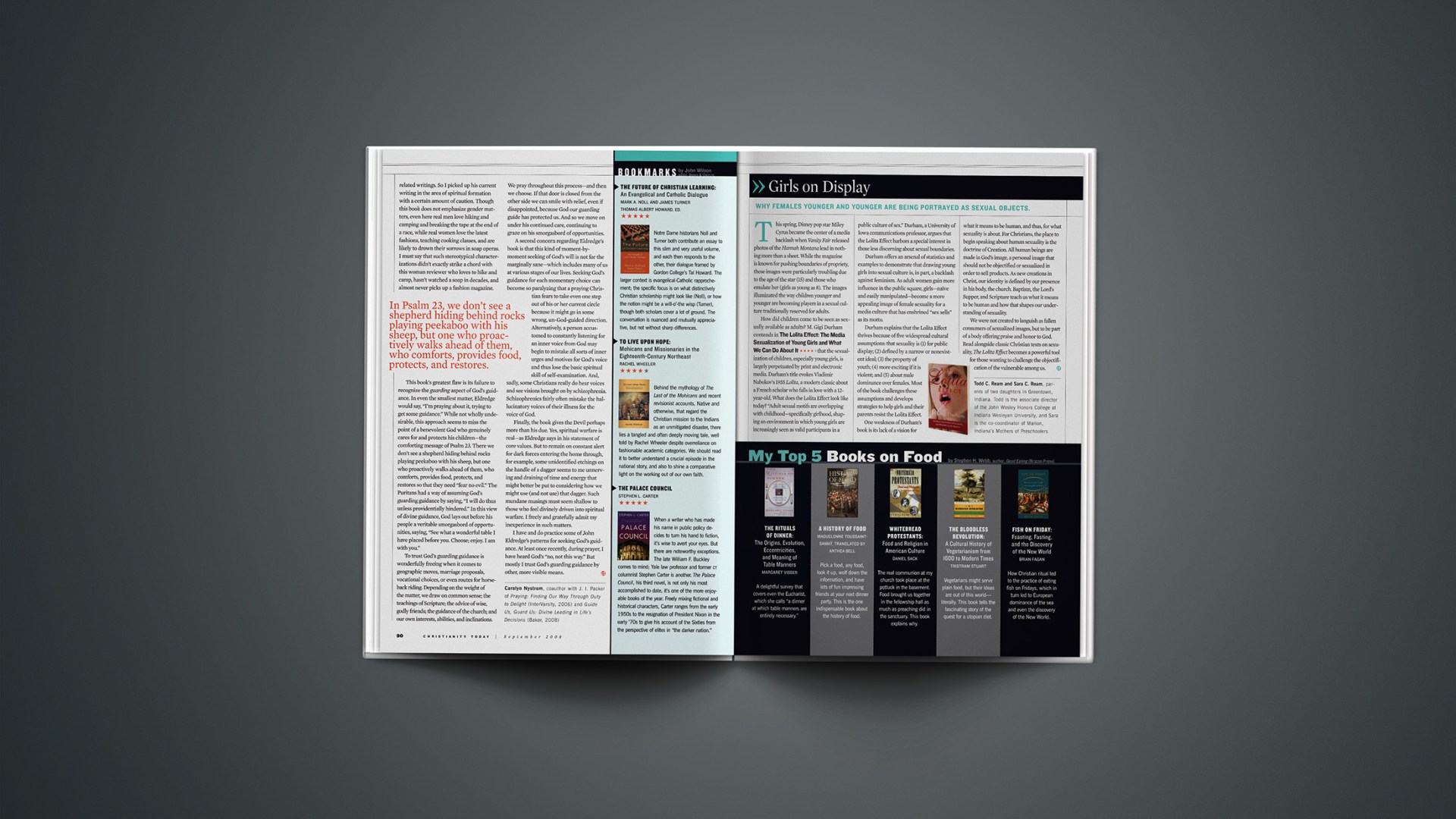This spring, Disney pop star Miley Cyrus became the center of a media backlash when Vanity Fair released photos of the Hannah Montana lead in nothing more than a sheet. While the magazine is known for pushing boundaries of propriety, these images were particularly troubling due to the age of the star (15) and those who emulate her (girls as young as 8). The images illuminated the way children younger and younger are becoming players in a sexual culture traditionally reserved for adults.
The Lolita Effect: The Media Sexualization of Young Girls and What We Can Do About It
Brand: Overlook Hardcover
286 pages
$19.57
How did children come to be seen as sexually available as adults? M. Gigi Durham contends in The Lolita Effect: The Media Sexualization of Young Girls and What We Can Do About It (4 stars) that the sexualization of children, especially young girls, is largely perpetuated by print and electronic media. Durham’s title evokes Vladimir Nabokov’s 1955 Lolita, a modern classic about a French scholar who falls in love with a 12-year-old. What does the Lolita Effect look like today? “Adult sexual motifs are overlapping with childhood—specifically girlhood, shaping an environment in which young girls are increasingly seen as valid participants in a public culture of sex.” Durham, a University of Iowa communications professor, argues that the Lolita Effect harbors a special interest in those less discerning about sexual boundaries.
Durham offers an arsenal of statistics and examples to demonstrate that drawing young girls into sexual culture is, in part, a backlash against feminism. As adult women gain more influence in the public square, girls—naïve and easily manipulated—become a more appealing image of female sexuality for a media culture that has enshrined “sex sells” as its motto.
Durham explains that the Lolita Effect thrives because of five widespread cultural assumptions: that sexuality is (1) for public display; (2) defined by a narrow or nonexistent ideal; (3) the property of youth; (4) more exciting if it is violent; and (5) about male dominance over females. Most of the book challenges these assumptions and develops strategies to help girls and their parents resist the Lolita Effect.
One weakness of Durham’s book is its lack of a vision for what it means to be human, and thus, for what sexuality is about. For Christians, the place to begin speaking about human sexuality is the doctrine of Creation. All human beings are made in God’s image, a personal image that should not be objectified or sexualized in order to sell products. As new creations in Christ, our identity is defined by our presence in his body, the church. Baptism, the Lord’s Supper, and Scripture teach us what it means to be human and how that shapes our understanding of sexuality.
We were not created to languish as fallen consumers of sexualized images, but to be part of a body offering praise and honor to God. Read alongside classic Christian texts on sexuality, The Lolita Effect becomes a powerful tool for those wanting to challenge the objectification of the vulnerable among us.
Todd C. Ream and Sara C. Ream, parents of two daughters in Greentown, Indiana. Todd is the associate director of the John Wesley Honors College at Indiana Wesleyan University, and Sara is the co-coordinator of Marion, Indiana’s Mothers of Preschoolers.
Copyright © 2008 Christianity Today. Click for reprint information.
Related Elsewhere:
The Lolita Effect: The Media Sexualization of Young Girls and What We Can Do About It is available on Amazon.
Previous articles on sexuality and gender are available on our site.











